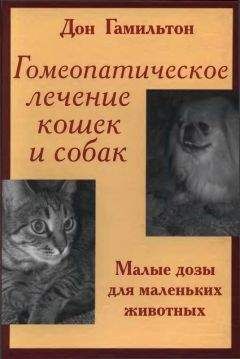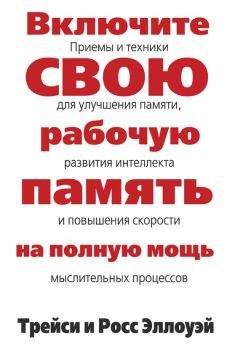Питер Уорд - Новая история происхождения жизни на Земле
201
Описание великолепного исследования (одного из многих!) Нейла Ландмана и его коллег приводится в следующей статье: N. H. Landman et al., «Methane Seeps as Ammonite Habitats in the U. S. Western Interior Seaway Revealed by Isotopic Analyses of Well-preserved Shell Material,» Geology 40, no. 6 (2012): 507. Другие открытия данной научной группы представлены здесь: N. H. Landman et al., «The Role of Ammonites in the Mesozoic Marine Food Web Revealed by Jaw Preservation,» Science 331, no. 6013 (2011): 70–72. Здесь впервые говорится о процессе питания аммонитов рода Baculite, а также об источниках их питания.
202
См. выше.
203
G. J. Vermeij, «The Mesozoic Marine Revolution: Evidence from Snails, Predators and Grazers,» Palaeobiology 3 (1977): 245–58.
204
S. M. Stanley, «Predation Defeats Competition on the Seafloor,» Palaeobiology 34, no. X (2008): 1–21.
205
T. Baumiller et al., «Post-Paleozoic Crinoid Radiation in Response to Benthic Predation Preceded the Mesozoic Marine Revolution,» Proceedings of the National Academy of Sciences of the United States of America 107, no. 13 (2010): 5893–96.
206
T. Oji, «Is Predation Intensity Reduced with Increasing Depth? Evidence from the West Adantic Stalked Crinoid Endoxocrinus parrae (Gervais) and Implications for the Mesozoic Marine Revolution,» Palaeobiology 22 (1996): 339–51.
207
У. Гибсон, Б. Стерлинг. Машина различий / Пер. с англ. М. Пчелинцева. — Екатеринбург: У-Фактория, 2002.
208
L. W. Alvarez et al., «Extraterrestrial Cause for the Cretaceous-Tertiary Extinction,» Science 208, no. 4448 (1980): 1095. Позднее исследование было дополнено обнаружением самого кратера: A. R. Hildebrand et al., «Chicxulub Crater: A Possible Cretaceous-Tertiary Boundary Impact Crater on the Yucatan Peninsula, Mexico,» Geology 19 (1991): 867–71.
209
P. Schulte et al. «The Chicxulub Asteroid Impact and Mass Extinction at the Cretaceous-Paleogene Boundary,» Science 327, no. 5970 (2005): 1214–18.
210
J. Vellekoop et al., «Rapid Short-Term Cooling Following the Chicxulub Impact at the Cretaceous-Paleogene Boundary,» Proceedings of the National Academy of Sciences 111, no 21 (2014): 7537–7541. Обсуждение места падения и тенденций самого вымирания рассматривается во многих источниках, но мы порекомендуем следующий: P. Ward, Under a Green Sky: Global Warming, the Mass Extinctions of the Past, and What They Can Tell Us About Our Future (Washington, D.C.: Smithsonian. 2007).
211
Обратите внимание также на потрясающий обзор нашего коллеги: D. Jablonski, «Extinctions in the Fossil Record (and Discussion),» Philosophical Transactions of the Royal Society of London, Series B 344. 1307 (1994): 11–17.
212
D. M. Raup and D. Jablonski, «Geography of End-Cretaceous Marine Bivalve Extinctions,» Science 260, 5110 (1993): 971–73; P. M. Sheehan and D. E. Fastovsky, «Major Extinctions of Land-Dwelling Vertebrates at the Cretaceous-Tertiary Boundary, Eastern Montana,» Geology 20 (1992): 556–60; R. K. Bambach et al., «Origination, Extinction, and Mass Depletions of Marine Diversity,» Palaeobiology 30, no. 4 (2004): 522–42. D. J. Nichols and K. R. Johnson, Plants and the K-T Boundary (Cambridge: Cambridge University Press, 2008); P. Ward et al., «Ammonite and Inoceramid Bivalve Extinction Patterns in Cretaceous-Tertiary Boundary Sections of the Biscay Region (Southwestern France, Northern Spain),» Geology 19, no. 12 (1991): 1181–84; также, обратите внимание: N. MacLeod et al., «The Cretaceous-Tertiary Biotic Transition,» Journal of the Geological Society 154, no. 2 (1997): 265–92. Также: P. Shulte et al., «The Chiexulub Asteroid Impact and Mass Extinction at the Cretaceous-Paleogene Boundaiy,» Science 327, no. 5970 (2010): 1214–18.
213
V. Courtillot et al., «Deccan Flood Basalts at the Cretaceous-Tertiary Boundary?» Earth and Planetary Science Letters 80, nos. 3–4 (1986): 361–74; C. Moskowitz, «New Dino-Destroying Theory Fuels Hot Debate,» space, com, October 18, 2009.
214
T. S. Tobin et al., «Extinction Patterns, δ18 O Trends, and Magnetostratigraphy from a Southern High-Latitude Cretaceous-Paleogene Section: Links with Deccan Volcanism,» Palaeogeography, Palaeoclimatology, Palaeoecology 350–52 (2012): 180–88.
215
Лучшей работой в области палеонтологических исследований позвоночных долгое время оставалась книга Роберта Кэрролла «Vertebrate Paleontology and Evolution» (New York: W. H. Freeman and Company, 1988). Существует также недавняя публикация о том, что в своей книге мы называем «третьей эрой млекопитающих»: O. R. P. Bininda-Emonds et id. «The Delayed Rise of Present-Day Mammals,» Nature 446, no. 7135 (2007): 507–11: Z.-X. Luo et al., «A New Mammaliaform from the Early Jurassic and Evolution of Mammalian Characteristics,» Science 292, 5521 (2001): 1535–40.
216
J. R. Wible et al., «Cretaceous Eutherians and Laurasian Origin for Placental Mammals Near the K-T Boundary,» Nature 447, no. 7147 (2007): 1003–6; M. S. Springer et al., «Placental Mammal Diversification and the Cretaceous Tertiary Boundary,» Proceedings of the National Academy of Sciences 100, no. 3 (2002): 1056–61.
217
K. Plelgen, «The Mammal Family Tree,» Science 334, no. 6055 (2011): 458–59.
218
Q. Ji et al., «The Earliest Known Eutherian Mammal,» Nature 416, no. 6883 (2002): 816–22.
219
Z.-X. Luo et al., «A Jurassic Eutherian Mammal and Divergence of Marsupials and Placentals.» Nature 476, no. 7361 (2011): 442–45.
220
K. Jiang, «Fossil Indicates Hairy, Squirrel-sized Creature Was Not Quite a Mammal,» Chicago News, August 7, 2013; C. F. Zhou, «A Jurassic Mammaliaform and the Earliest Mammalian Evolutionary Adaptations,» Nature 500 (2013: 163–67).
221
Z.-X. Luo, «Transformation and Diversification in Early Mammal Evolution,» Nature 450, no. 7172 (2007): 1011–19.
222
J. P. Kennett and L. D. Stott, «Abrupt Deep-Sea Warming, Paleoceanographic Changes and Benthic Extinctions at the End of the Paleocene,» Nature 353 (1991): 225–29.
223
U. Rohl et al., «New Chronology for the Late Paleocene Thermal Maximum and Its Environmental Implications,» Geology 28, no. 10 (2000): 927–30; T. Westerhold et al., «New Chronology for the Late Paleocene Thermal Maximum and Its Environmental Implications,» Palaeogeography, Palaeoclimatology, Palaeoecology 257 (2008): 377–74.
224
P. L. Koch et al., «Correlation Between Isotope Records in Marine and Continental Carbon Reservoirs Near the Paleocene-Eocene Boundary,» Nature 358 (1992); 319–22.
225
M. D. Hatch, «C(4) Photosynthesis: Discovery and Resolution,» Photosynthesis Research 73, nos. 1–3 (2002): 251–56.
226
E. J. Edwards and S. A. Smith, «Phylogenetic Analyses Reveal the Shady History of G Grasses,» Proceedings of the National Academy of Sciences 107, nos. 6 (2010): 2532–37; C. P. Osborne and R. P. Freckleton, «Ecological Selection Pressures for C4 Photosynthesis in the Grasses,» Proceedings of the Royal Society B-Biological Sciences 276, no. 1663 (2009): 1753–60.
227
Наше личное примечание к данной главе: один из нас (Питер Уорд) держал двух попугаев в качестве домашних животных (хотя в отношениях между человеком и птицей непонятно, кто кого содержит). При этом был очевиден уровень интеллекта попугаев. И подобное утверждение касается не только попугаев. Если понаблюдать за воронами или другими птицами, которые держатся стаями, можно заметить их удивительный и, более того, прогрессирующий интеллект. Забавно, что от птиц пошло уничижительное выражение «куриные мозги». Сравните размер нашего мозга с размером мозга жако и задумайтесь, что эти птицы могут строить предложения, заниматься простой арифметикой, и их поведение в целом очень сложно структурировано. Мы все надеемся на то, что курица, которую мы едим каждый день, крайне глупа. А вот, может, и нет!
228
K. Padian and L. M. Chiappe, «Bird Origins,» in P. J. Currie and K. Padian, eds., Encyclopedia of Dinosaurs (San Diego: Academic Press, 1997), 41–96; J. Gauthier, «Saurischian Monophyly and the Origin of Birds,» in K. Padian, Memoirs of the California Academy of Sciences 8 (1986): 1–55; L. M. Chiappe, «Downsized Dinosaurs: The Evolutionary Transition to Modern Birds,» Evolution: Education and Outreach 2, no. 2 (2009): 248–56.
229
J. H. Ostrom, «The Ancestry of Birds,» Nature 242, no. 5393 (1973): 136; J. Gauthier, «Saurischian Monophyly and the Origin of Birds,» in K. Padian, Memoirs of the California Academy of Sciences 8 (1986): 1–55; J. Cracraft, «The Major Clades of Birds,» in M. J. Benton, ed., The Phylogeny and Classification of the Tetrapods, Volume I: Amphibians, Reptiles, Birds (Oxford: Clarendon Press, 1988), 339–61.
230
A. Feduccia, «On Why the Dinosaur Lacked Feathers,» in M. K. Hecht et al., eds. The Beginnings of Birds: Proceedings of the International Archaeopteryx Conference Eichstatt 1984 (Eichstatt: Freunde des Jura-Museums Eichstatt, 1985), 75–79; A. Feduccia et al., «Do Feathered Dinosaurs Exist? Testing the Hypothesis on Neontological and Paleontological Evidence,» Journal of Morphology 266, no. 2 (2005): 125–66.
231
J. O’Connor, «A Revised Look at Liaoningornis Longidigitris (Aves).» Vertebrate PalAsiatica 50 (2012): 25–37.
232
A. Feduccia, «Explosive Evolution in Tertiary Birds and Mammals,» Science 267, no. 5198 (1995): 637–38; A. Feduccia, «Big Bang for Tertiary’ Birds?» Trends in Ecology and Evolution 18, no. 4 (2003): 172–76.
233
M. Norell and M. Ellison, Unearthing the Dragon: The Great Feathered Dinosaur Discovery (New York: Pi Press, 2005); R. Prum, «Are Current Critiques of the Theropod Origin of Birds Science? Rebuttal to Feduccia 2002,» Auk 120, no. 2(2003): 550–61; S. Hope, «The Mesozoic Radiation of Neomithes,» in L. M. Chiappe et al., Mesozoic Birds: Above the Heads of Dinosaurs (Oakland: University of California Press, 2002), 339–88; P. Ericson et al., «Diversification of Neoaves: Integration of Molecular Sequence Data and Fossils,» Biology Letters 2, no. 4 (2006): 543–47; K. Padian, «The Origin and Evolution of Birds by Alan Feduccia (Yale University Press, 1996),» American Scientist 85: 178–81; M. A. Norell et al., «Flight from Reason. Review of: The Origin and Evolution of Birds by Alan Feduccia (Yale University Press, 1996),» Nature 384, no. 6606 (1997): 230; L. M. Witmer, «The Debate on Avian Ancestry: Phylogeny, Function, and Fossils,» in L. M. Chiappe and L. M. Witmer, eds., Mesozoic Birds: Above the Heads of Dinosaurs (Berkeley: University of California Press, 2002), 3–30.




